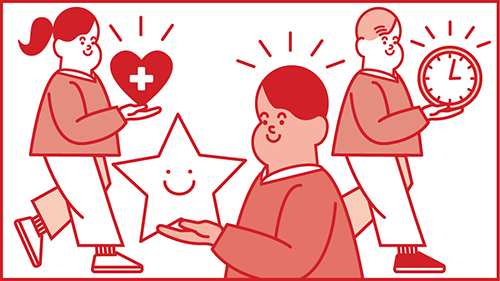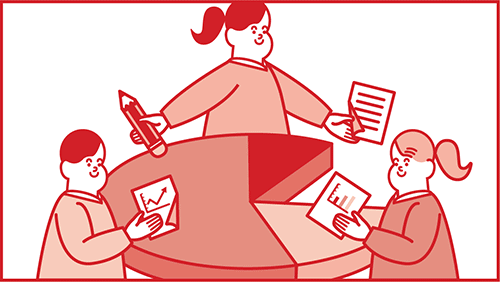For more stories like this, sign up for the PLANSPONSOR NEWSDash daily newsletter.
SURVEY SAYS: Responses to Gap Analysis
Last week, I asked NewsDash readers,”Have you obtained a retirement readiness gap analysis; how did it make you feel in terms of being prepared or on track for retirement; and did it motivate you to take certain savings actions?”
More than six in 10 (61.1%) of responding readers work in a plan sponsor role, while 13.9% are advisers/consultants, 19.4% are TPAs/recordkeepers/investment managers, 2.8% are attorneys and 2.8% are CPAs.
Nearly all (91.9%) of respondents have obtained a retirement readiness gap analysis for themselves. Among those, one-quarter said it made them feel very prepared for retirement, and 36.1% indicated it made them feel somewhat prepared. In addition, 5.5% reported it made them feel on track for preparedness.
However, 22.2% of respondents indicated the gap analysis made them feel somewhat behind in preparing for retirement; 2.8% said it made them feel not prepared and not on track, and 8.3% reported they were not sure or they didn’t obtain a gap analysis.
As for motivation to take action, one-quarter of respondents increased their savings rate in response to the gap analysis, 22.2% changed investment options and 16.7% scheduled a one-on-one planning session with a retirement plan provider or adviser. Only 2.8% signed up for automatic deferral percentage increases (if available in their plan), while another 2.8% said they took all of the following actions in response to the gap analysis. Nearly four in 10 (38.9%) took none of the action.
Thoughts about gap analyses were mixed, with some saying the limited input and questionable projections make them unrealistic and others saying they are a helpful tool and result in better savings actions. There were also some who noted a gap analysis can be very discouraging. Editor’s Choice goes to the reader who said, “It appears that I will be a NewsDash reader for many more years!”
A big thank you to everyone who participated in the survey!Verbatim
I think it either makes you feel prepared or makes you feel overwhelmed and that retirement preparedness is unrealistic.
It is frustrating to see the gap increase when my salary and contributions increase, and due to downturns in the market!
Many that I have seen fail to include a spouse's information or in some cases, Social Security. Most also have a simplistic approach to the amount of retirement income needed. Others merely project based on expected returns and inflation rather than use a Monte Carlo analysis.
The tool available to us does not have a good way to include assets outside of the plan in the analysis. That makes it relatively useless.
Have also received analysis which shows I am very prepared. Not sure how valuable any of them were.
Fundamentally flawed, unless they are personalized to take into account ALL assets and specific income needs in retirement. Is mortgage paid off? Kids still in college? Any debt? Taking care of elderly parents? There may be some benefit to waking people up to the need to save, but the off-the-shelf analyses aren't likely to come close to reality.
Since our approach as always been to save as much as possible, we're okay. Some years that included new houses or layoffs vary, understandably. I like working in this industry...that's certainly helped me be prepared. Shame on me if I were not on track.
Someday I hope to retire and enjoy umbrella drinks on a white sand beach, but instead I fear I will keel over with my fingers posed above a keyboard...
Not sure what assumptions are used to calculate, I guess it only emphasizes the more you save the better off you are.
This would be more useful than just info on what you have in placeVerbatim (cont.)
As a prophet for retirement savings, my role is to demonstrate that few things are harder to deal with than the annoyance of a good example.
We encouraged our entire firm to do this and had @ 50 people (out of @ 330) take advantage of it and receive one. It definitely altered some savings plans and helped to increase savings for many.
The gap analysis is only as good as the person preparing and delivering it.
This sort of thing doesn't motivate me because a snapshot from just one of my accounts means nothing. In order to really know my "readiness", I would need an aggregate of all my retirement money and this does not do it, so overall pretty worthless information.
It appears that I will be a NewsDash reader for many more years!
The cobbler's kids never have shoes, and all too often those of us "in" this business are better at telling others what to do than to do it ourselves. Everyone ought to go through this process at least once a year, if only to experience first-hand what we criticize others for not doing...
The forecasting model and gap analysis are great tools for our participants.
Encouraged others to review their plan, as well, scary to see how little we have to live on in retirement, reality is here, too close to make any substantial changes now!
For me at age 60, not soon enough. Glad that younger employees are getting more information than what was available to me. I'll be working into my 70s at this point.
I feel very fortunate to have worked with retirement plans over the past 25 years. I hope to have saved way too much money to spend in my retirement!
NOTE: Responses reflect the opinions of individual readers and not necessarily the stance of Asset International or its affiliates.
